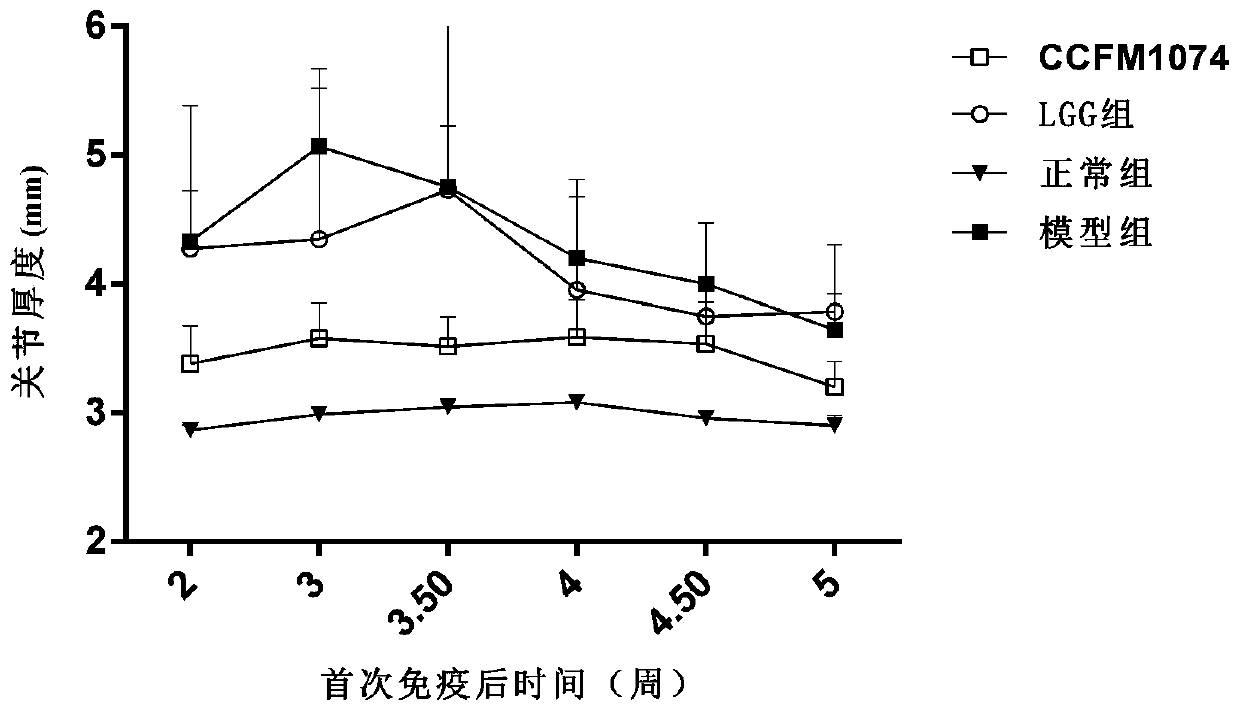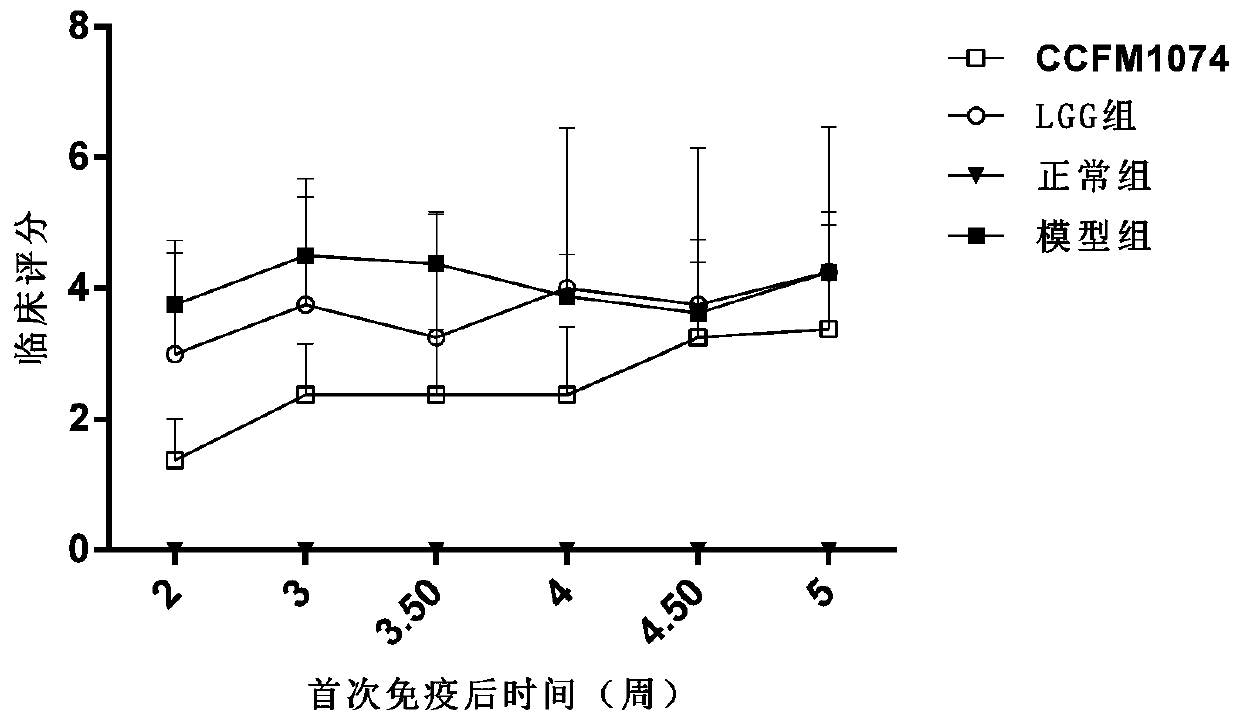Lactobacillus casei capable of relieving rheumatoid arthritis and application of lactobacillus casei
A technology of Lactobacillus casei and rheumatoid, applied in the field of microorganisms, can solve the problems of high cost, induction of other diseases, excessive suppression of the immune system, etc., and achieve low-cost effects
- Summary
- Abstract
- Description
- Claims
- Application Information
AI Technical Summary
Problems solved by technology
Method used
Image
Examples
Embodiment 1
[0063] Embodiment 1: Screening and strain identification of Lactobacillus casei
[0064] 1. Screening
[0065] Healthy human feces samples from Wuxi were stored in 30% glycerol in a -80°C refrigerator. After taking out the sample and thawing it at low temperature, mix the sample evenly, draw 0.5mL sample and add it to 4.5mL, carry out gradient dilution with 0.9% normal saline containing 0.05% cysteine, and select the appropriate gradient dilution solution to coat the sample with 0.05% cysteine On the MRS solid medium of cystine, culture at 37°C for 48 hours, pick typical colonies to streak and purify on the MRS solid medium, pick a single colony and transfer to MRS liquid medium (containing 0.05% cysteine) Cultured in , and the cultured cells were preserved in 30% glycerol to obtain strains CCFM1074, L1 and L2.
[0066] 2. Identification
[0067] The genomes of CCFM1074, L1, and L2 were extracted, and the 16S rDNA of CCFM1074, L1, and L2 were amplified and sequenced (by Hua...
Embodiment 2
[0068] Embodiment 2: the cultivation of Lactobacillus casei
[0069] Lactobacillus casei (Lactobacillus casei) CCFM1074 was inoculated into MRS solid medium (containing 0.05% cysteine) and cultured at 37°C for 48 hours, and its colonies were observed, and it was found that the colonies were milky white, with smooth surfaces and round bulges.
[0070] Lactobacillus casei (Lactobacillus casei) CCFM1074 was inserted into MRS liquid medium (containing 0.05% cysteine) and after anaerobic culture at 37 °C for 24 h, it was transferred into fresh MRS liquid medium (containing 0.05% cysteine). ), cultured under the same conditions for 24 hours, centrifuged at 6000g for 15min, washed with 0.9% normal saline and centrifuged again at 6000g for 10min to obtain the bacteria, resuspended with 30% sucrose solution, and frozen at -80°C until use.
Embodiment 3
[0071] Example 3: Tolerance of different Lactobacillus casei to simulated gastrointestinal fluid
[0072] 1. Tolerance of different Lactobacillus casei to simulated gastric juice
[0073] Lactobacillus casei (Lactobacillus casei) CCFM1074, Lactobacillus casei (Lactobacillus casei) L1, and Lactobacillus casei (Lactobacillus casei) L2 obtained in Example 1 were respectively inserted into MRS liquid medium and cultivated at 37°C for 18 hours, and then the cells were collected by centrifugation , the collected cells were washed with normal saline, and after the washing, the cells were centrifuged again to collect the cells, and the collected cells were resuspended in the normal saline containing 3g / L pepsin at pH 3 (pH adjusted by HCl), and kept Lactobacillus casei (Lactobacillus casei) CCFM1074, Lactobacillus casei (Lactobacillus casei) L1, and Lactobacillus casei (Lactobacillus casei) L2 have the same initial concentration in normal saline, take 0.1mL of the bacterial liquid and c...
PUM
 Login to View More
Login to View More Abstract
Description
Claims
Application Information
 Login to View More
Login to View More - R&D
- Intellectual Property
- Life Sciences
- Materials
- Tech Scout
- Unparalleled Data Quality
- Higher Quality Content
- 60% Fewer Hallucinations
Browse by: Latest US Patents, China's latest patents, Technical Efficacy Thesaurus, Application Domain, Technology Topic, Popular Technical Reports.
© 2025 PatSnap. All rights reserved.Legal|Privacy policy|Modern Slavery Act Transparency Statement|Sitemap|About US| Contact US: help@patsnap.com



